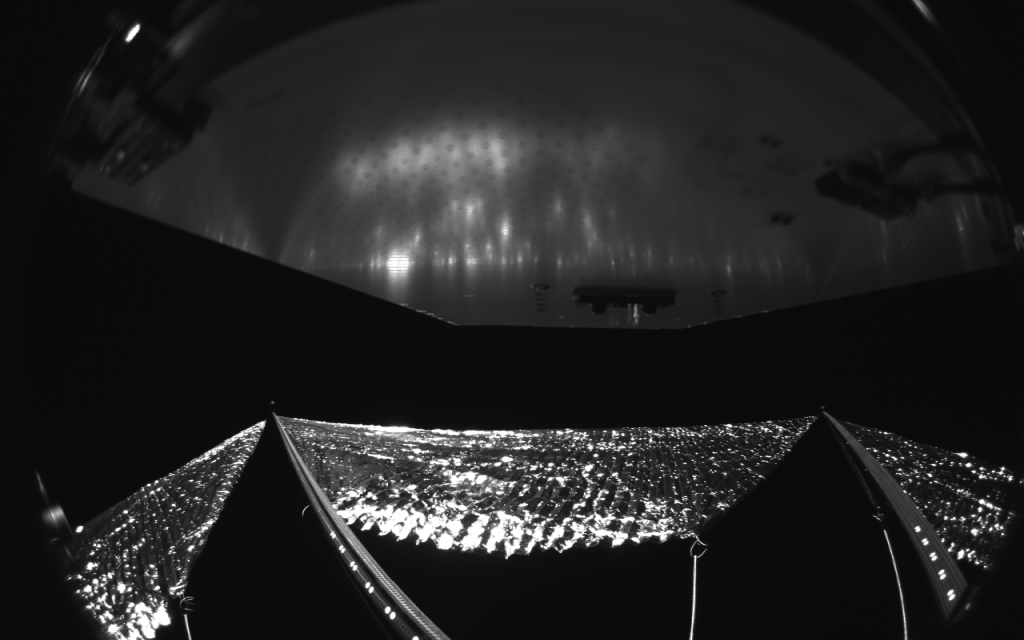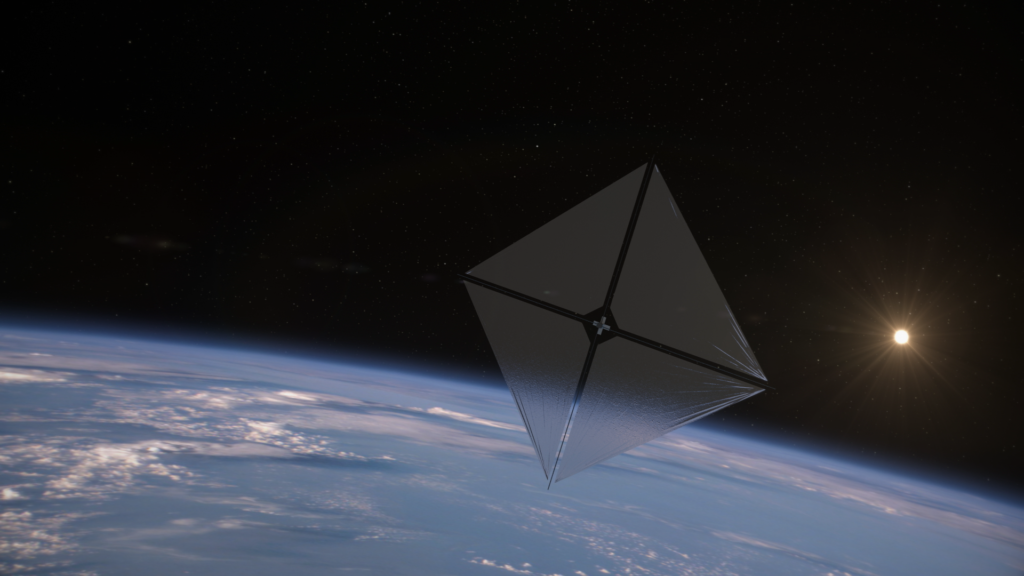NASA has published the first selfies taken by the experimental satellite ACS3 (Advanced Composite Solar Sail System). It shows its deployed solar sail.

The ACS3 satellite was built on the basis of the Cubesat platform (12 units). The satellite is designed to demonstrate the technology of deploying a large solar sail in orbit. This is the name given to a device, usually a film, that uses the pressure of sunlight or a laser on a mirrored surface to power a spacecraft.
To deploy the sail, ACS3 uses composite booms made of flexible polymer and carbon fiber. They are stiffer and lighter than similar structures used in previous NASA solar sails. The deployment process is as follows. Booms unfold from the roulette-like center spindles, extending four triangular sails. When unfolded, they resemble a kite. The size of each side is 9 meters and the total surface area is 80 m³.

ACS3 was launched on April 24, 2024. But only last week NASA specialists started deploying its sail. The process is monitored by cameras, one of which obtained the published image. At its bottom, you can see the sail itself, while at the top you can see the back of one of the satellite’s solar panels. The booms are set at right angles and the solar panel is rectangular in shape, but it seems distorted due to the fact that it was shot with a wide-angle camera.
According to a NASA statement, the satellite was put into flight mode without orientation control before the sail was deployed. Because of this, it is now slowly tumbling. After the mission team finishes characterizing the sail and making sure it is deployed correctly, they will reactivate the orientation system and stop the tumbling. The vehicle will then try a series of orbital change maneuvers to demonstrate the sail’s capabilities.
It is also worth saying that after the deployment of the ACS3, it became possible to see it with the naked eye. But it should be mentioned that its visibility in the night sky may be intermittent, and it may change brightness while moving. Those wishing to see the sailboat can check the time of its flyby using a new feature on NASA’s mobile app. Another option is the website heavens-above.com. In order to find out the time of sail passes, you need to specify your coordinates, then select ACS3 from the list of satellites on the front page of the site.
Earlier we told you about a project to explore Proxima Centauri using solar sails.
According to NASA


